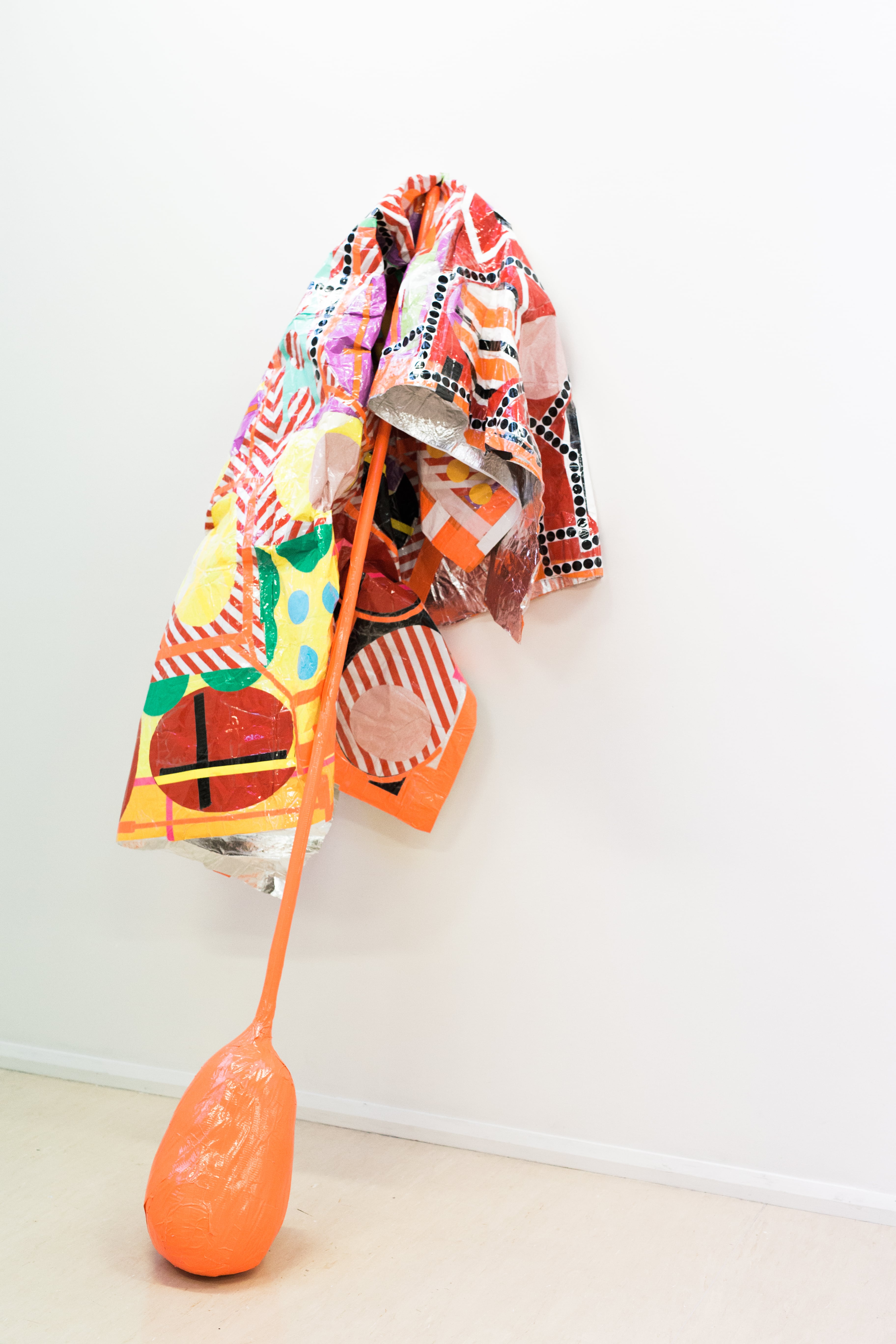
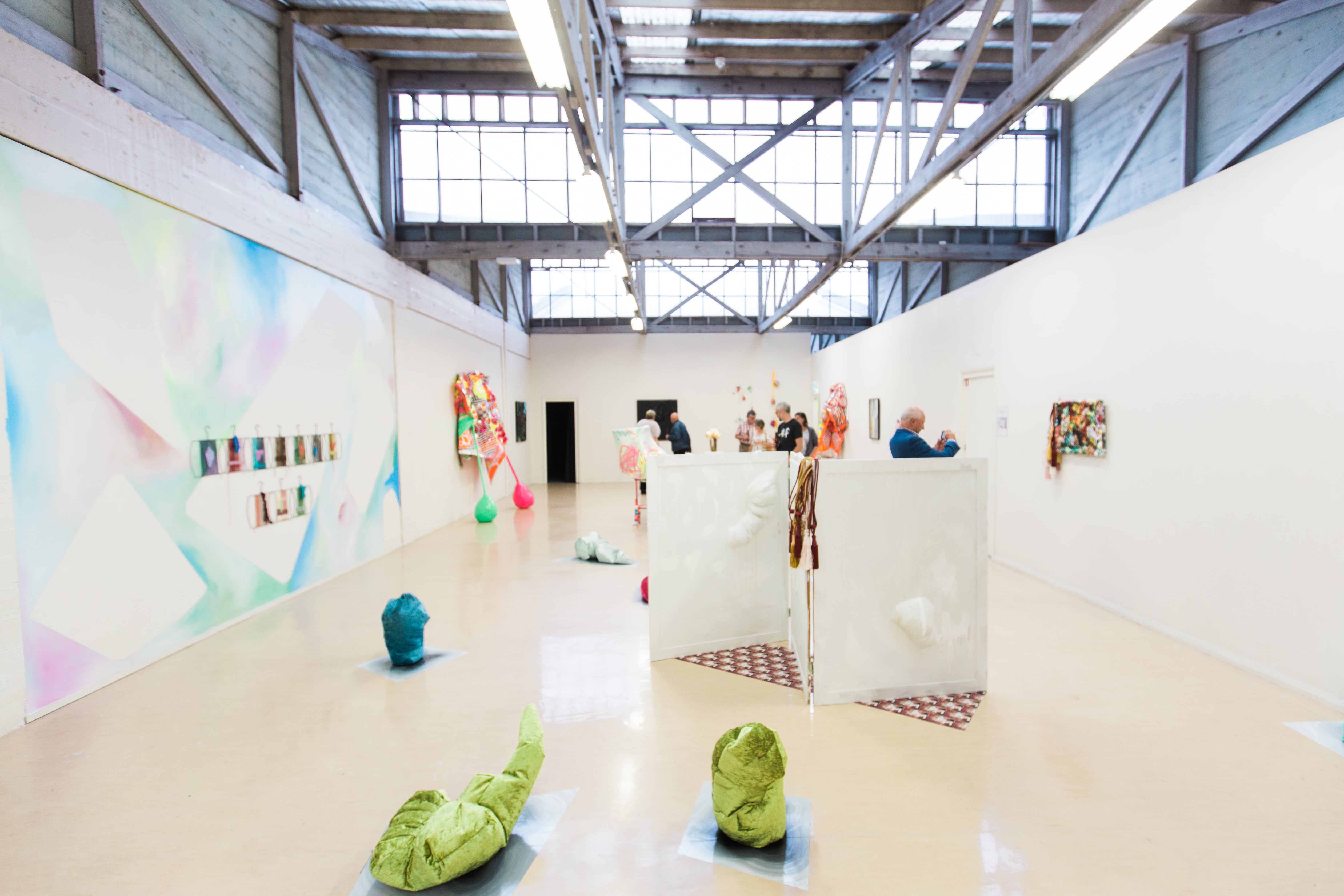
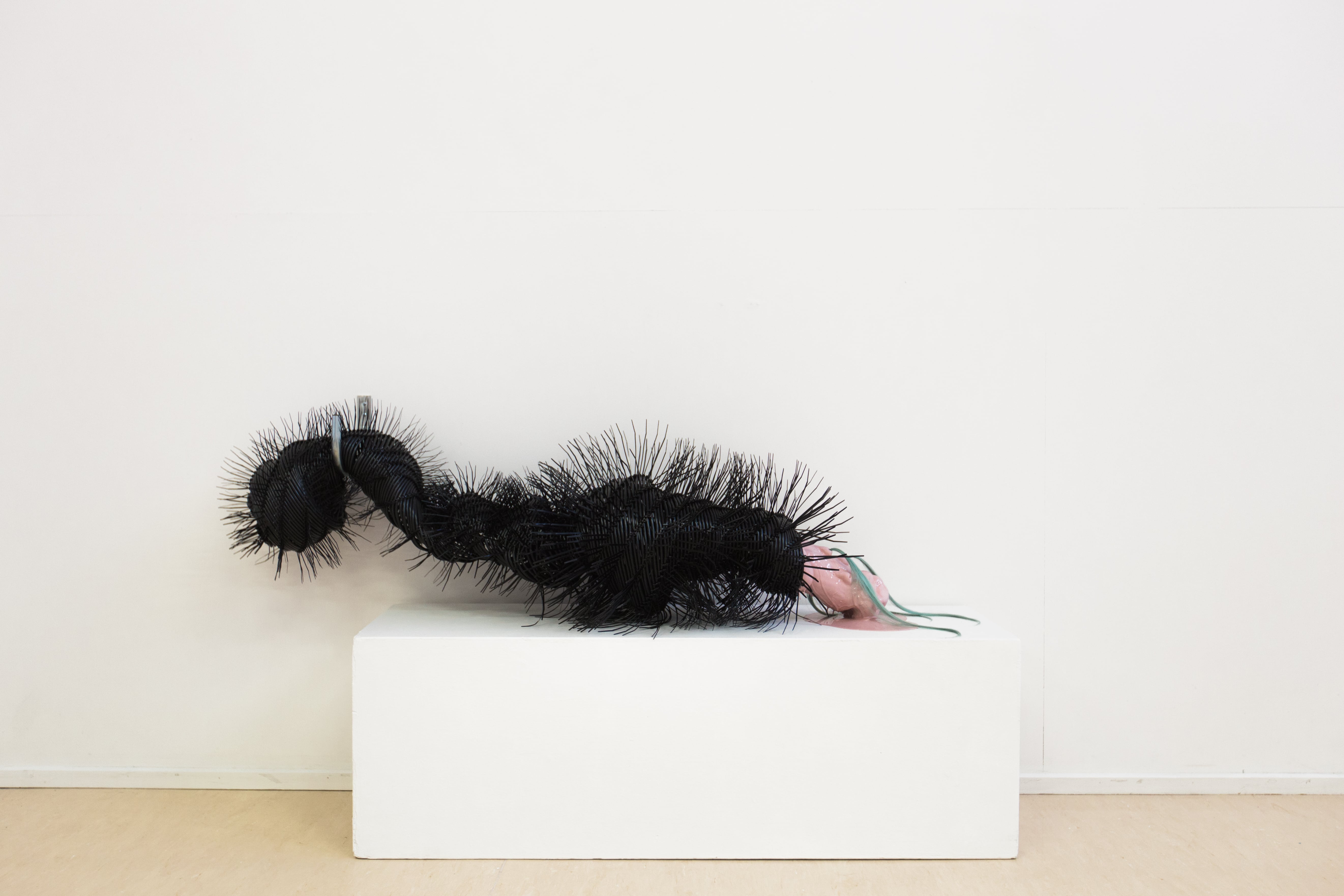
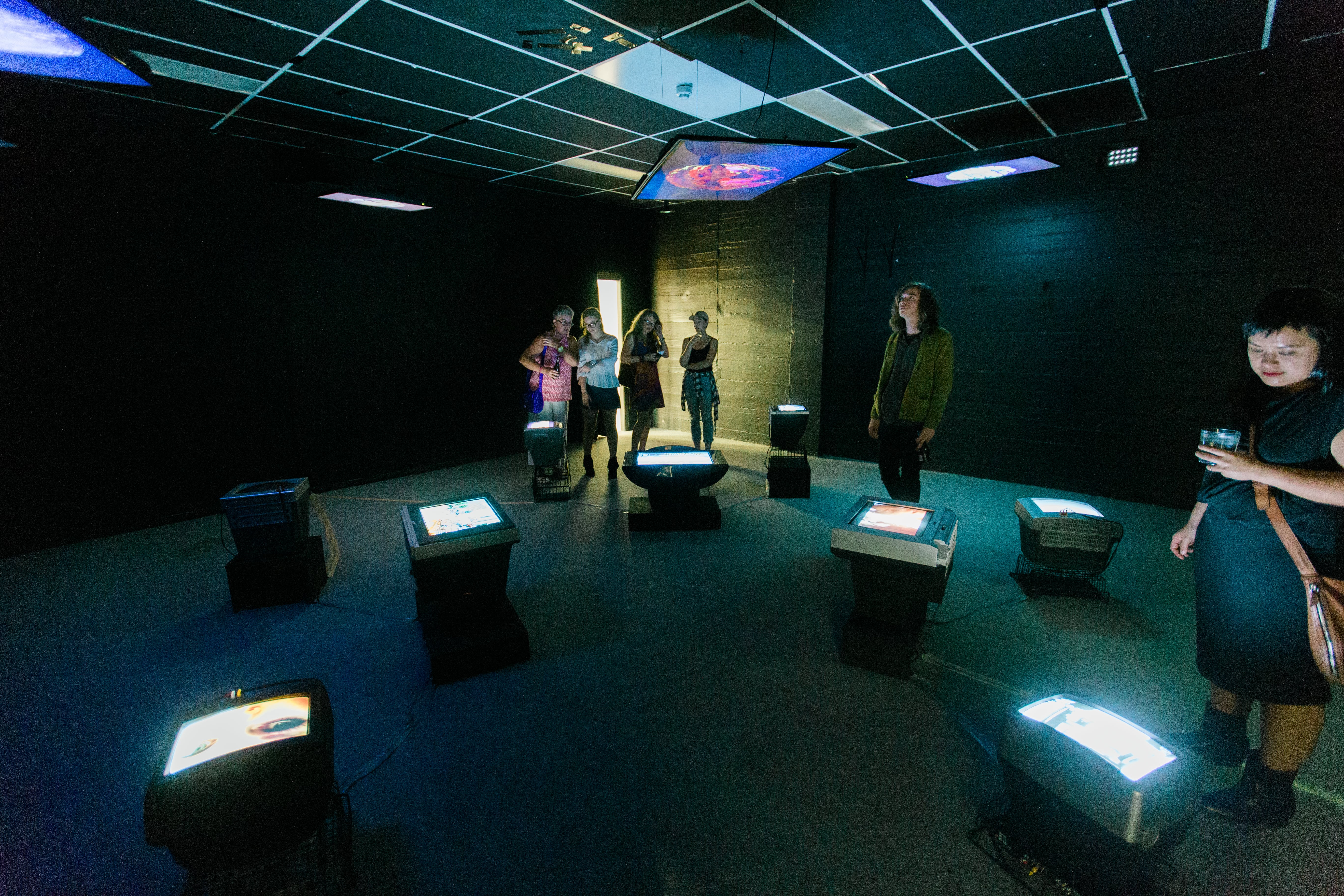
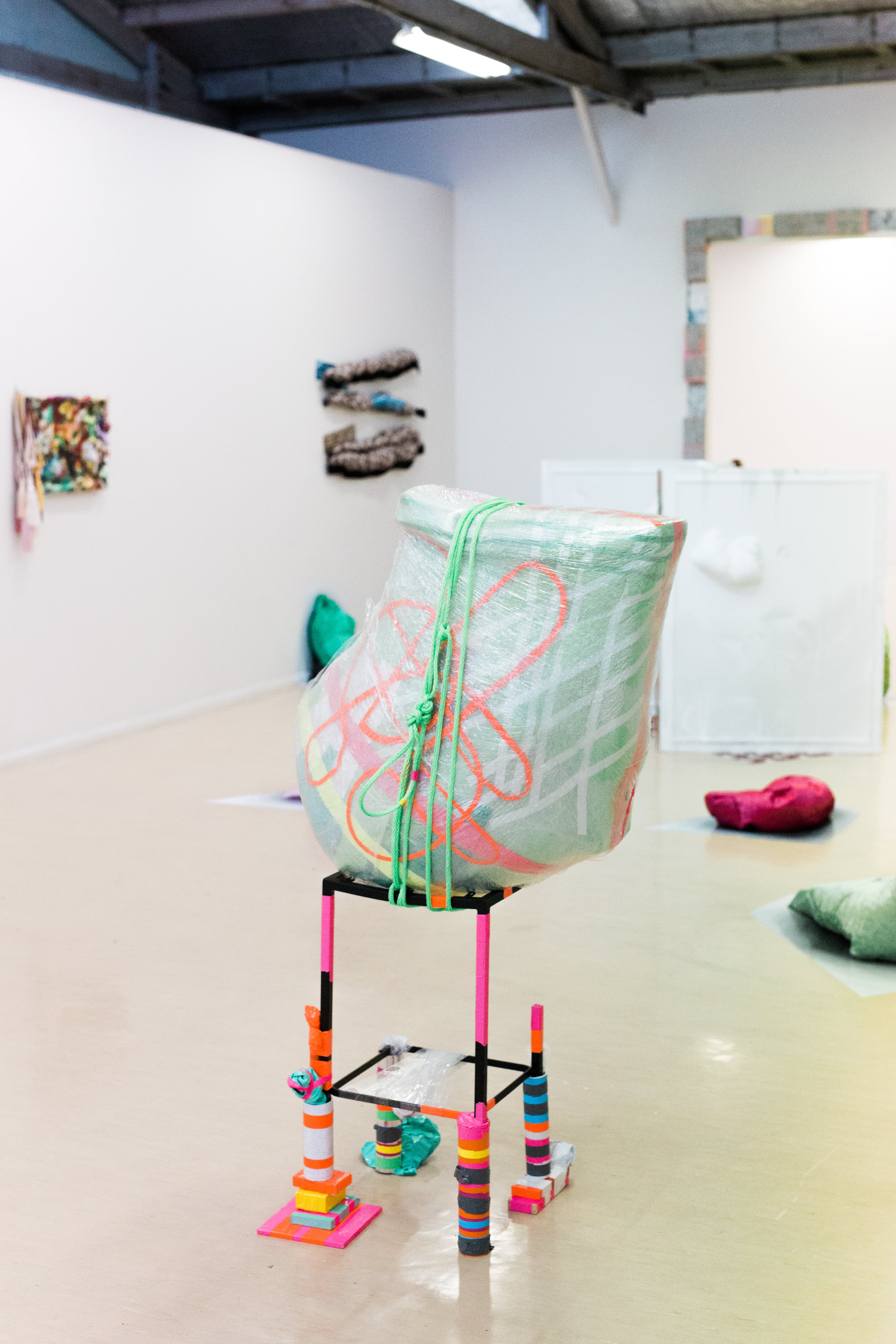
Artists: Seve de Angelis, Lina Buck, Mat Carey, Steven Carson, Jessica Orloff, Mae Finlayson, Josh Foley, Michelle Smith, Garth Howells, Erin Linhart, Paul Murphy, Alastair Mooney, Kimberley Pace and Darryl Rogers
Curator: Paul Eggins
From a simple numerical curatorial premise – seven spaces, seven pairs of artists – Seven is a testing of the granularity of local knowledge amidst the influx of large-scale cultural events. This summer the MONA FOMA juggernaut rolled into town, venturing beyond the established stomping grounds in Hobart for a test run in Launceston. Ask any Tasmanian and there’s a series of anecdotes about the north/south divide, like the hatchets that were symbolically buried by the Hobart and Launceston City Councils back in 1959 only to be literally unburied in 2012. Considering Seven, there’s an easy immediate narrative of the local ARI championing the value of work from the margins. But this ignores the complexity of the interrelationships between large-scale and small-scale points of connection across the island, as well as of the work itself.
The origin of this show was in the Sawtooth showcase Touch With Your Eyes at the 2017 Hobiennale, also curated by Paul Eggins. The selection of work for this earlier show was a statement about the vibrant arts practice being nurtured by Sawtooth under its recently appointed director, as well as a demonstration of the ongoing solidarity between ARIs that mobilises across geographic locations. Seven drew on the dialogue between works created in Touch With Your Eyes and extended them by playfully testing the intersections of artwork and built environment within the seven exhibition spaces of Sawtooth.
The first encounter is with Mat Carey and Alistair Mooney in the marginal spaces of the stairway entry of Sawtooth and the Portal (a repurposed cupboard). Their skulls and video work collapses the art history references of momento mori with the abstracted presence of mundane objects of local significance; a stylised Boag’s beer can. The construction of intimate viewing experiences mandated by the physical environs made the space between life and death the work staked out all the more confrontational for viewers.
When I arrive upstairs into the foyer area, partially obscured by the opening night crowd, Garth Howell’s work is suspended in the middle of the room. The muted haze of grey and blue is offset by Lina Buck’s strongly delineated colour and form in a framed image hung on a nearby wall. An obstruction, a destination, a glimpse, a frame; these works demand attention despite the press of bodies around.
In the Dark Space, a black cube room, the viewer is caught between the installations of work on two planes. The ceiling and floor are activated, the walls receding in the darkness. Jess Dorloff’s work sits on the ground, looking up to the screens suspended from the ceiling. Scattered around, the old chunky carcasses of cathode ray televisions resemble stranded remnants of antiquated technology left behind by the flow of time. Zombie objects screening zombie media, they loop through the debris of digital archives, free-floating associations between news, children’s entertainment, popular culture, archival footage. Up above, Darryl Rodger’s video works manipulate light and time to exceed the places where his footage is taken, opening up otherworlds.
Through the black curtain sealing off the Dark Space, an open white space is punctuated by intense colour. Steven Carson’s hyper-domestic objects are out of scale, oversized and adorned. Everyday materials, like tape, take on vibrant life over the pattered surfaces. Placed alongside, Erin Linhart’s similarly uncanny objects embrace the faux glamour of gold and colour in their bubbling and dangling forms. Positioned within the same space, Mae Finlayson’s responses to discarded, unfinished domestic craft items takes what she labels as ‘wrong making’ and extends their language of material, form and motif. Panne velvet blobs, constructed from misjoined dress pattern pieces, are arranged against Josh Foley’s direct application of paint to floor and walls, creating voids from which these misshapen pieces seem to emerge. Foley’s work emphasises the surface in its productions of illusion, generating textures and depth that challenge assumptions of the neutral gallery space.
Further back, in the first of two smaller galleries, Kimberley Pace’s surrealist sculptural forms unsettlingly blend reference to body parts, animal trophies, and glam costume. Sitting alongside, Paul Murphy’s slender towers of foam and aluminium reference their geological origins in Murphy’s fascination with rose quartz. The space is dominated by these more than human presences. In the final gallery, Seve de Angelis’s paintings feature sinuous lines of contrasting colour. In juxtaposition, the bleached surfaces of the printed ceramic tubes of Michelle Smith’s work are poised on the reflective surfaces of percussion stands. They evoke sound waves transmuted into matter.
The assemblage of work across Seven is an exercise in navigating the intersections of form, materials and style. Testing the possibilities of the diverse display spaces contained within Sawtooth, the exhibition also foregrounds the materiality of the space and its audiences’ relationship to that space. The dialogue between works is a statement about the diversity of current practice in this regional setting, but also interrogates Sawtooth’s anomalous position as a large ARI in a small town. Is an ARI a platform or an incubator for creative practice? Curator Paul Eggins stakes out a position in which ARI is a connector – between works, between paired artists, between major events and constant presence – grounded by a deep commitment to its place.
Karen Hall is a lecturer in Art Theory in the School of Creative Arts at the University of Tasmania.
